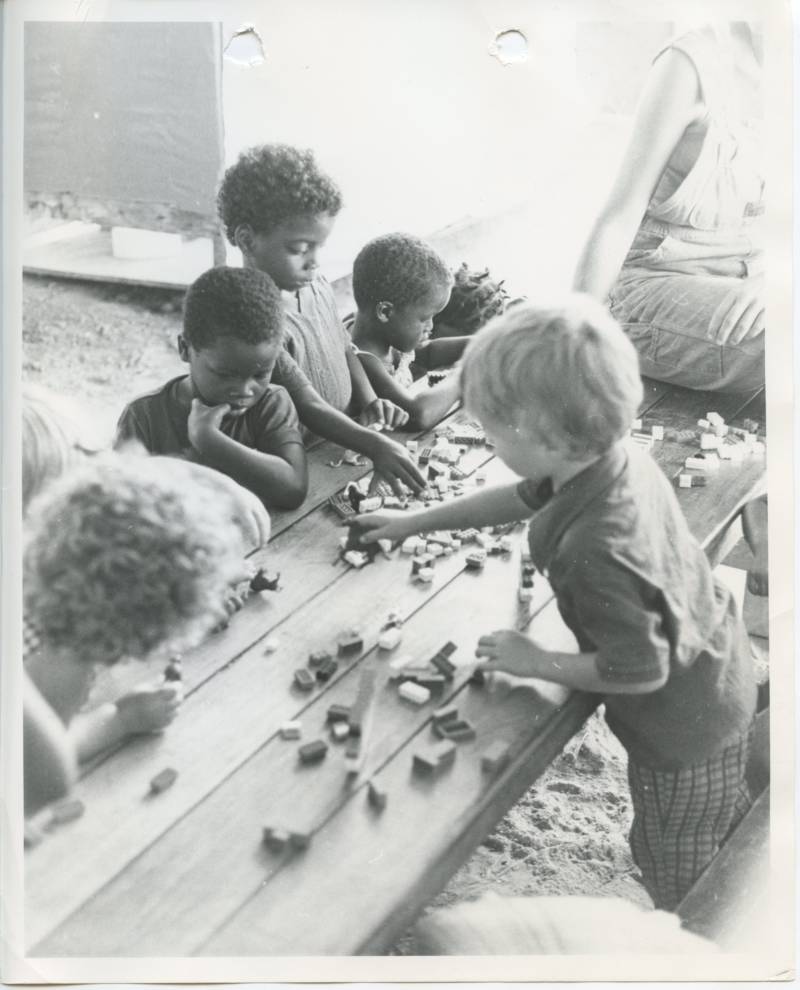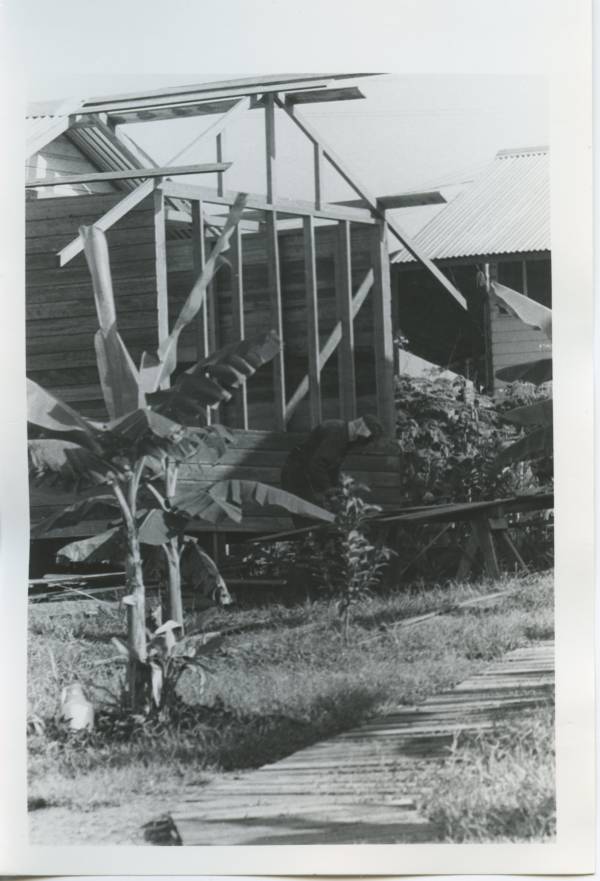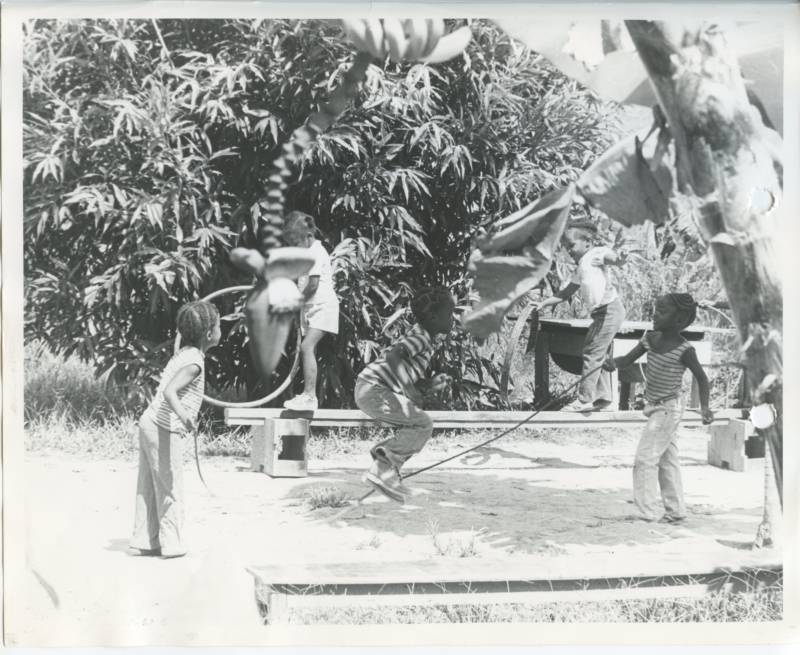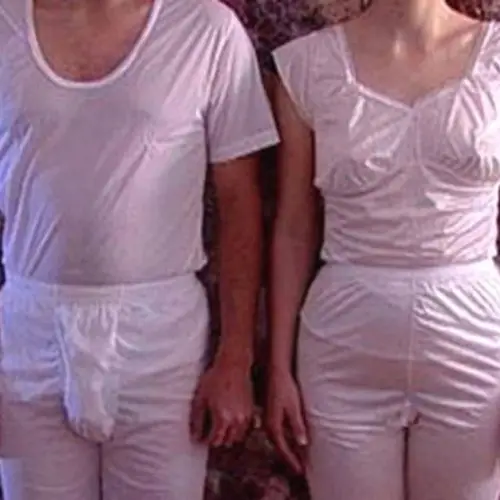Jonestown was never self-sufficient. Peoples Temple members worked hard to sustain the group's life there — until the day they committed mass suicide.
The legacy of Jonestown is often considered a historical warning against the dangers of joining fringe groups, a cautionary tale to be more skeptical, and a lesson not to “drink the kool-aid.” This is certainly rooted in truth and good-natured advice, considering the de-evolution of Jim Jones’ Peoples Temple — and that its exodus to Guyana ended in the largest incident of intentional civilian death in American history until 9/11.
What has since become synonymous with the term cult, however, began as a promising fresh start for a directionless group of disaffected hippies in an era where the United States seemed endlessly embroiled in war, political assassinations, and civil disenchantment. For the nearly 1,000 that lost their lives that day in Jonestown, which included over 300 children, Jonestown was meant to be a haven for those who saw the anti-war movement falter and lose its way. Perhaps, by creating a brand new colony in the untouched jungles of Guyana, there’d be hope.
After only a year and a half in the remote South American settlement, of course, it all came crashing down. Jim Jones, a reverend with an impressive talent for culling people of all sorts into a unified group, had succumbed to egomania and full-fledged sociopathy.
As the United States government increasingly investigated him, and his chances of escaping elsewhere rapidly dwindling, Jones eventually managed to find a loophole: death. It is only too tragic that he deemed it necessary to take all members of Jonestown with him.
On Nov. 18, 1978, Jim Jones directed his followers to kill a U.S. congressman and numerous journalists who had come to Jonestown. Then, over 900 people faithful to Jones imbibed cyanide-laced Fla-Vor-Aid and died. It was part mass murder, part mass suicide, and completely tragic for everyone involved.
The Peoples Temple Appeals To The Disenfranchised
For people like Laura Johnston Kohl, Jim Jones' Peoples Temple was ripe with potential. As the 1960s was a great awakening for those who were politically inclined, there was an unprecedented urge for people to come together, especially when certain figureheads — like JFK or MLK — for the dreams of societal change were murdered.
"Right when I was beginning to be an activist and working through who I was and what I wanted to do, a lot of people that I looked to as some way out of the mess that the United States was in with segregation and all the different things going on — they were all shot and killed," said Kohl. "And then we got into the war in Vietnam."
As the daughter of a Democratic chairman and a young woman routinely protesting issues like Vietnam and segregation, Kohl lived with the Black Panthers for a time and sought effective ways to change the system.
When her sister invited her out to San Francisco, Haight-Ashbury became home to Kohl. She was eager to find a group that fit her ethos which certainly wasn't comprised of her sister's lawyer friends. They did recommend a burgeoning organization to her, however, called the Peoples Temple — led by a peculiar, engaging figure called Jim Jones.
"They said, 'Well, Jim Jones has a group, an integrated group, and he's a socialist, and he's somebody who wants to work and remedy what's going on with the world, so it'd probably be a perfect match,'" Kohl recalled.
A Move To California For Jim Jones' Followers
The Peoples Temple began in Indiana but relocated to California's Redwood Valley in 1965 before settling in San Francisco in 1972.
What drew people to Jones' congregation was his ability to combine evangelical Christianity, a call for radical social change, and appeal to people's desires for a better life. Kohl had always been an atheist so it wasn't God she was looking for — even so, she quickly saw through her new leader.
"However he could appear traditional, with a robe and holding a Bible, really he didn't limit himself to that, that was just all illusion — that was his public persona," said Kohl. "And the other part of him — besides the craziness and the egomania and the narcissistic personality disorder and later on sociopath — was inclusive, and wanted kids to swim, and wanted people to think outside the box, and wanted people to be proactive and involved and things."
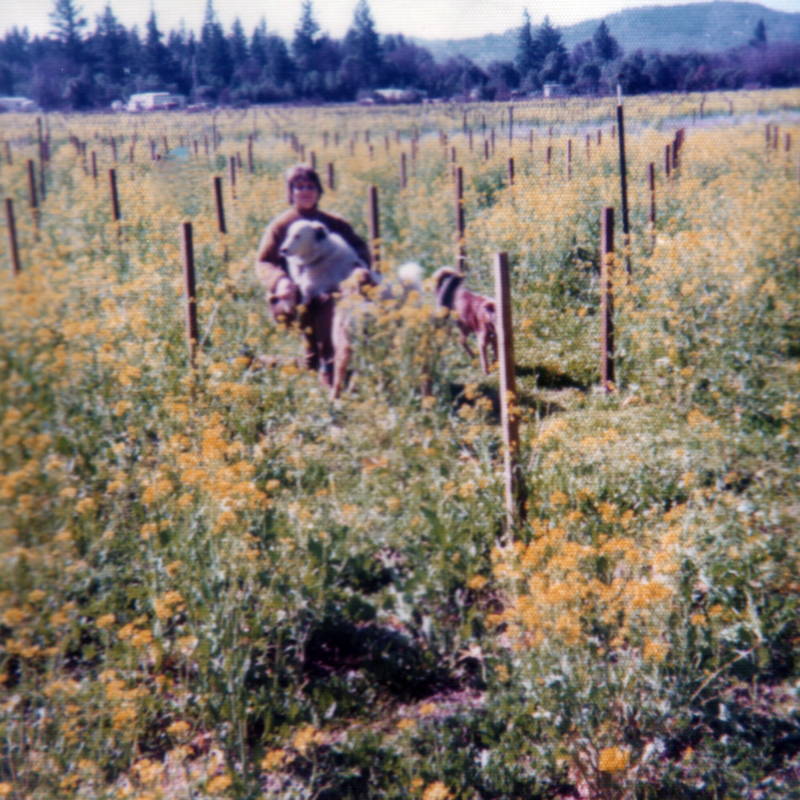
The Jonestown InstituteMembers of the Peoples Temple in the Redwood Valley ranch, 1975.
Kohl worked in the Redwood Valley property's security tower multiple days a week. Several hundred members were already living on the property and Jones was quite welcoming and open in those days. He was involved in most meetings and casually checked in on his followers from time to time.
"It was really a time when we got to know each other, got to know the system, saw Jim on a nearly daily basis," said Kohl.
On the other hand, it was also the beginning, for Kohl, of a sense that Jones wasn't as genuine as his followers thought.
"He was a political leader, and he was very...astute," Kohl recalled. "The Bible says 'be all things to all people.' Jim personified being all things to all people, which included lying to people, all along the way, to make people feel that he was on their same wavelength. So he would be sure when he looked around a room and he was giving a sermon, he would be sure to include all points of view: political, social, religious."
"He pretended to be a man of God, which pretty early on, I did not believe."
In 1974, when one of the earliest members of Peoples Temple died of a drug overdose, Jones saw an opportunity to get another start elsewhere. According to Kohl, he preached about the need for more control and that owning property and being politically involved is no good if the Temple's own members could not even be protected from drugs.
"So we started talking about moving to Guyana," said Kohl. "Moving to a place where we had control, where we wouldn't have drugs. He (Jim) had been to Guyana in the '60s. I'm not sure if he told us that. I don't remember him saying that he had been there."
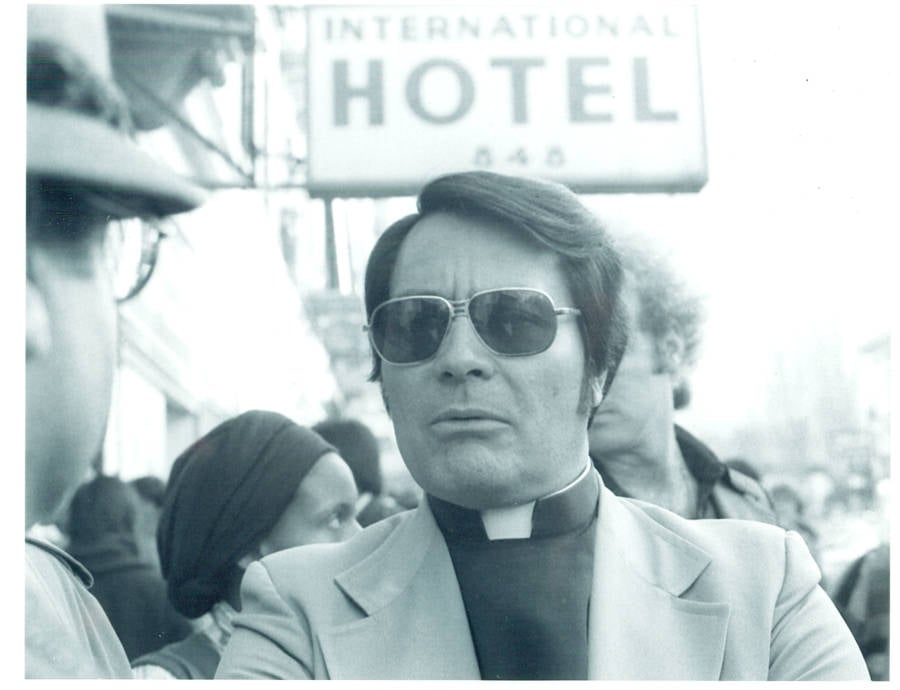
Wikimedia CommonsJim Jones at an anti-eviction protest at the International Hotel in 1977.
Establishing Jonestown In Guyana
As a member of the Planning Commission, Kohl and a few others accompanied Jones to Guayana in the winter of 1975. When Kohl first arrived, however, Jonestown barely resembled a livable space.
"Some roads had already been cleared...it was very, very primitive," she recalled. "There were a few buildings that were constructed, and about 20 or 30 were living there and working really hard — cutting down the rain forest, leveling the ground, figuring out where things were gonna be, and putting in refrigeration and the generators and stuff. It was the very early stages of what was going on in Jonestown."
"It started out with forty people," Kohl recalled. "I moved down to Guayana in March of 1977...And then, every month another 20 or 40 or 60 people would come. Then in the summer of 1977, when the news media was beginning their investigation of Jim, Jim moved several hundred people over the summer. So by the end of 1977, there were probably 700 people there."
While Jim Jones would eventually manage to attract thousands of followers so devoted to and eager for change that they willingly moved to the jungles of South America, he wasn't necessarily prepared.
Kohl eventually became one of Jonestown's Procurers which meant that she was responsible for transporting food and materials to the remote colony from Georgetown which was 24 hours away by boat. "So several of us were called Procurers and our jobs were to go around Georgetown and buy pineapples, and beans and noodles and bread and everything for Jonestown," said Kohl.
This was because, according to Kohl, Jonestown itself was never self-sufficient. "So the whole thought of having 2,000 people there was absurd because Jonestown could not provide for the people who were there (already). We had 1,000 people living there, eating three meals a day and we had to buy everything. Hardly any crops were growing because we'd only been there for a year."
The Beginning Of The End For The Peoples Temple
Life in Jonestown was to be simple and full of hard work. "One of the things that happened was when somebody came in from the United States, their stuff would come through and we'd go, 'well you don't need any high heels, so we're gonna sell these. You don't really need a watch cause we have bells that we use," Kohl said.
For Mike Carter, who moved to Guyana when he was 18 and lived there with his child and nephews, life in Jonestown was a fairly regimented experience. Besides his duties as a Ham radio operator and A/V professional, the day to day was divided into activities that kept its members busy.
"For most people, it was working and attending services or meetings," said Carter. "When not working, people would get their laundry done, read, watch a movie in the pavilion, or just hang out. There wasn't a lot of leisure time. Also, there would be news read to us over the loudspeakers often."
According to The Guardian, Jones himself would frequently deliver his own thoughts across the property with a megaphone as people worked in the field or completed other duties. Kohl's time in Jonestown was largely comprised of agricultural work when she wasn't staying in Georgetown.
"I would get up at the crack of dawn," she said. "We were moving by the time the sun came up... Our first order of business in the morning was to go get 10 or 12 bags of greens and then carry 'em on our heads back into where the seniors were waiting for them, and then they would clean the greens so we could have 'em for dinner."

Wikimedia CommonsThe houses in Jonestown, 1979.
"I'd be out in the field until probably five o'clock, then we'd all come in, wed probably shower and then go to dinner. We'd have dinner and most every night we'd have some event in the pavilion... movies or Jim would talk about what he heard on the radio, or we'd have new songs that our really talented musicians would have, or we'd have literacy lessons."
But with more and more members committing to Jones' Guayanese settlement, the Peoples Temple leader began to flounder for solutions to keep them all busy, comfortable and settled. Kohl recalled that because Jones knew the property would never become self-sufficient, he considered instead moving the Peoples Temple to Russia or Cuba.
"I think he found out fairly early on that it would never be self-sufficient. So we had contacts with the Russian embassy in Guyana. They tried coming out but they couldn't fit Jim's plan. Because, you know, he had to be in charge, of everything."

The Jonestown InstituteLaura Johnston Kohl.
"I mean, really, that's not gonna work in Russia, anyway. Even though through public relations they might try to accommodate him to reality, they're not gonna have Jim Jones in charge of a group in Russia," Kohl reasoned.
Jones had allegedly also reached out to Cuba, but by that time Jonestown had grown so large the country didn't seem too interested.
Mass Murder And Suicide In Jonestown
Eventually, the commune's grip on its members tightened. Jones' mental and physical health deteriorated and it showed in how he ran his community. He established the "Red Brigade," which was a collection of armed guards meant to defend the perimeter of the settlement with guns and machetes. He had become concerned about infiltration from outsiders, or members leaving.
Many families of those living in Jonestown had become concerned by the lack of communication they had with their kin over in Guyana. They lobbied the U.S. government to assess the situation and one of those families eventually won a custody battle over a child of theirs living in the settlement.
The camp even began "white night" drills in which members simulated mass suicide in the event that Jones' mission and vision were compromised. After a big enough outcry from families stateside, California congressman Leo Ryan flew down to Guyana with several journalists to see the place for themselves. They arrived on Nov. 17, 1978.
The following day, a Peoples Temple member tried to stab Ryan. He and his group returned to the airstrip with dozens of Peoples Temple members in tow who wanted to escape Jonestown. but when they tried to board the plane, Jones' personal army opened fire on all of them. Ryan and four others, including two photo-journalists, were killed.
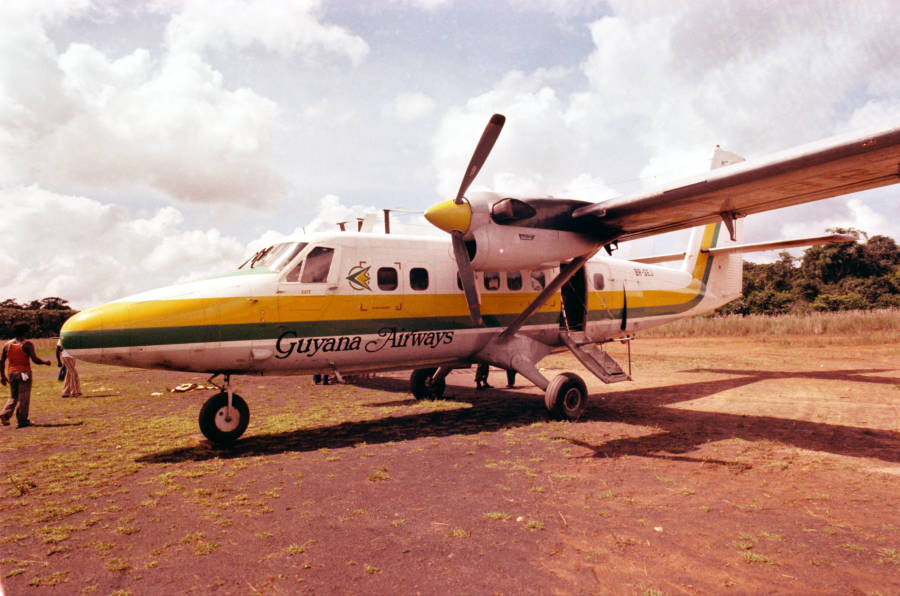
FBI/Public DomainRyan's plane at the Kaituma airstrip in 1978.
Kohl was of a few lucky Peoples Temple members who were in Georgetown and not Jonestown that day. In fact, Kohl had spent most of her time living in Georgetown. She had only moved and lived in Jonestown for some eight months before the tragedy.
"At the end of October, Jim called me to his cottage and said he wanted me to go back into Georgetown." That was less than three weeks before the day that ended it all, which began with the failed escape of Ryan, his delegation, and several members of Peoples Temple.
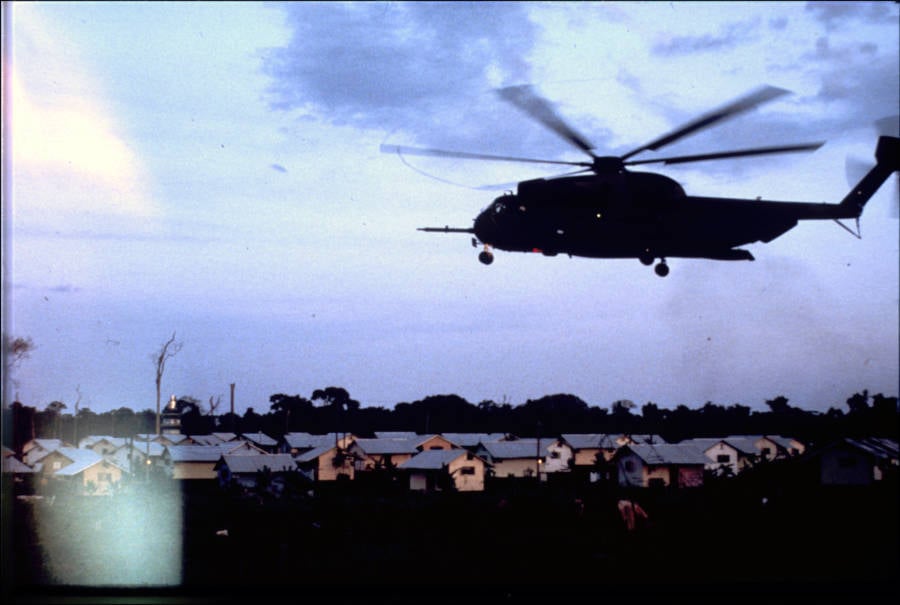
FBI/Public DomainHelicopters flying into Jonestown, Nov. 18, 1978.
It was shortly after the fiasco at the Kaituma airstrip that the mass death occurred. Some members, loyal and faithful to their leader, obeyed without question. Others may have been scared and terrified. There were those who believed themselves victim to a man who once seemed dedicated to his fellow man but had instead become murderous.
Lines of followers formed to receive cyanide-laced cups of punch or syringes. The young members were prioritized. Over 300 children were poisoned before anyone else. The audiotapes recovered by the FBI feature cries throughout the background.
Jim Jones was found dead with a gunshot wound, presumably self-inflicted.
Peoples Temple Survivors
"I believed in the promise of Jonestown, a type of utopia where people were equal and we worked together to build a self-sustaining community," said Carter. "They were people, mostly good and most with a desire to make the world a better place. There were a lot of children in Jonestown, including my child and my nephews."
Carter and Kohl are considered lucky, though both have lost friends or relatives to the events of Nov. 18, 1978.
A little over 40 years later, Kohl has sustained her ties to those who shared that time and place in life with her. Having just returned from an annual gathering of 65 survivors, Jonestown has shaped a big part of her life — not all of which is negative.
"That was a very important nurturing time," said Kohl. "So even with Jim gone, and everything that he did, the friends that I have from that period of time in my life in Peoples Temple — really they're some of the very best friends I have in my life."
After this first-hand look at the Peoples Temple members who lived in Jonestown, read about everyday life in Nazi Germany. Then, take a look at 34 photos of life after emancipation.

